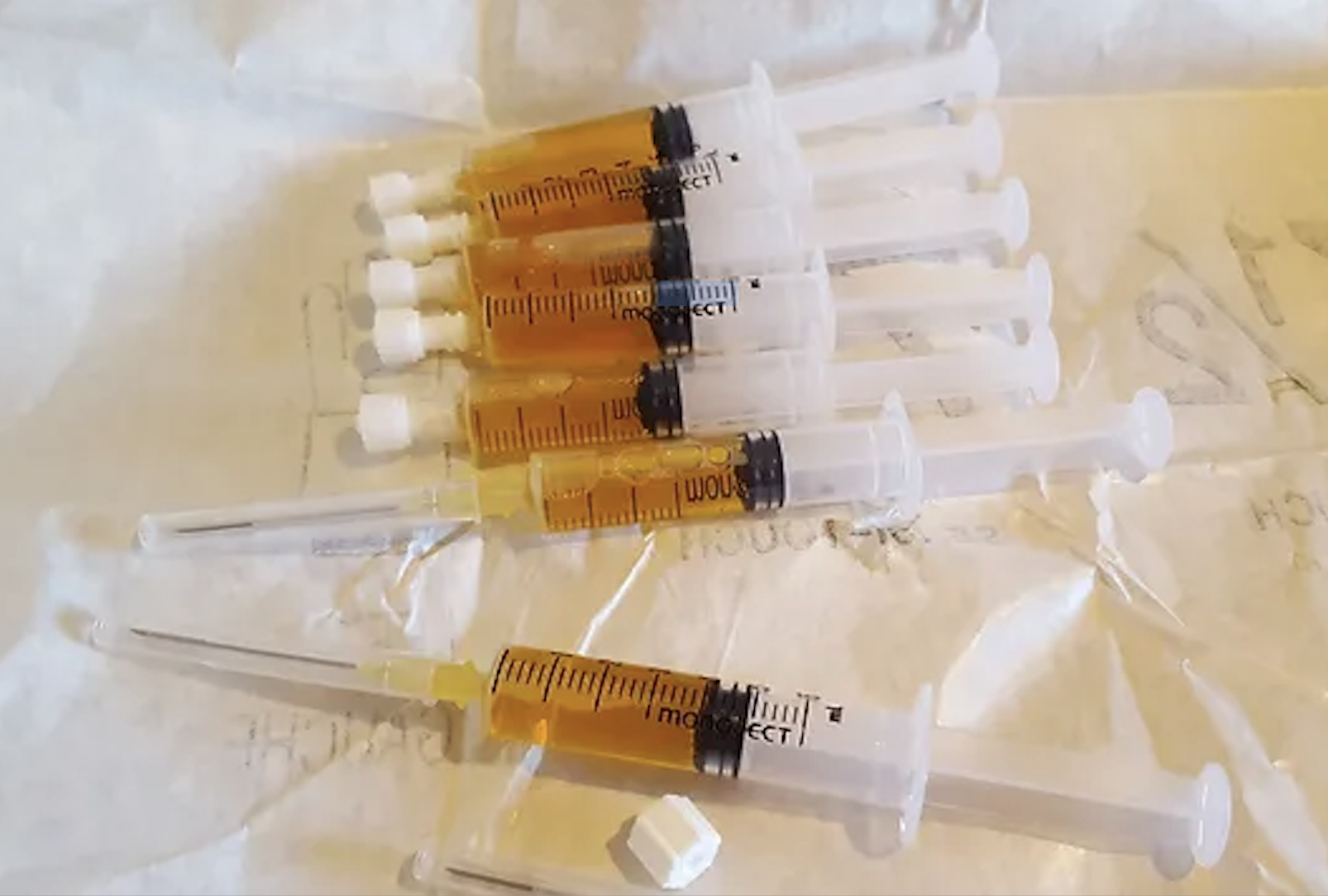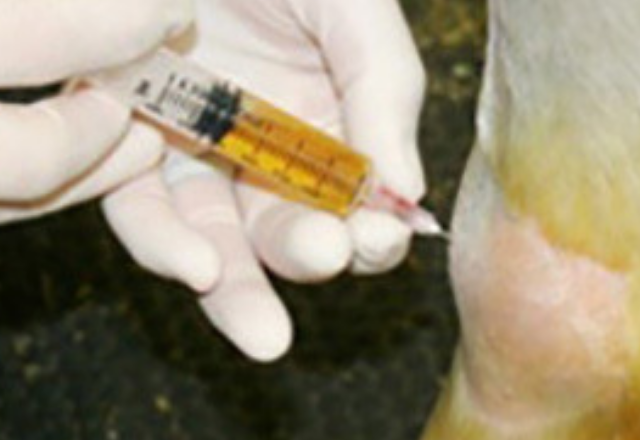Performance Horse Competition Preparation: Joint Care
Late winter/early spring is the time of year when those of us with the competitive urge start planning for the upcoming season of competitions. Top of mind is generally conditioning, schedule planning, and diet to ensure our horses are in peak performance shape come spring. But let’s not forget about the importance of addressing our horses from the inside out to make sure that there aren’t underlying issues that are going to rear their ugly head once competition season arrives. As many of you know, Dr. Penttila competes at a high level on her barrel horse so we’re going to share with you some tips and tricks from our veterinary team on how we keeps her horses in top form. Today we are focusing on joint therapies.
One of the most common conditions effecting soundness and performance lifespan of horses is osteoarthritis (OA) with some reports suggesting over 60% of lameness issues in horses are attributable to OA. OA is a slow, progressive disease of the joint that include damage to not just the bone but also the cartilage and soft tissue structures including joint capsule and supporting ligaments. It does not affect all horses equally with genetics, environment, diet, and type of stress/strain on the joint all playing a role in both the progression and severity of the disease. Once started, OA cannot be reversed and so instead we are limited to management to try and slow progression of the disease and treat inflammation when it occurs. The good news is that advances in veterinary diagnosis and management of OA allow us to identify OA earlier and support our patients and clients with more advanced treatments before the disease has limiting effects on performance.
OA may be suspected on your pre-season soundness exam based on the presence of heat, swelling, lameness or gait asymmetry, excess joint fluid, decreased range of motion, or response to flexions. Diagnosis may be aided with joint blocks and imaging to classify the specific joints affected and the severity of the disease present. If your horse is diagnosed with OA, your veterinarian can help you come up with a multimodal treatment plan for OA that may include therapeutic farriery, diet, regular exercise in a structured program balanced with rest, stretching/physiotherapy, or other supportive modalities such as massage, laser, chiropractic, or acupuncture.
In addition to above, there are a variety of joint support medications that can be added to your horse’s management to help prevent worsening disease and relieve clinical signs such as lameness. One mainstay of OA treatment for decades has been non-steroidal anti-inflammatory drugs (NSAIDs) such as phenylbutzone (Bute) or firocoxib (Previcox or Prevequine). These drugs can be used for their anti-inflammatory and pain control affects and while excellent at relieving the clinical signs of OA they do little to slow or reverse the disease process and come with risk of side effects such as gastric ulcers, colitis, and kidney injury. Alternatively, we can now reach for more directed treatments with potentially fewer side effects earlier in the disease process to help slow down progress of OA before it is a problem.
In addition to above, there are a variety of joint support medications that can be added to your horse’s management to help prevent worsening disease and relieve clinical signs such as lameness. One mainstay of OA treatment for decades has been non-steroidal anti-inflammatory drugs (NSAIDs) such as phenylbutzone (Bute) or firocoxib (Previcox or Prevequine). These drugs can be used for their anti-inflammatory and pain control affects and while excellent at relieving the clinical signs of OA they do little to slow or reverse the disease process and come with risk of side effects such as gastric ulcers, colitis, and kidney injury. Alternatively, we can now reach for more directed treatments with potentially fewer side effects earlier in the disease process to help slow down progress of OA before it is a problem.
Systemic options are divided into oral joint supplements and systemic injectable medications. Oral joint supplements such as 4Cyte will be covered in another feature but in brief they may help to decrease the progression of joint disease by disrupting the local inflammatory effects of OA. Systemically administered joint therapies such as hyaluronic acid (e.g. Legend), polysulfated glycosaminoglycans (e.g. Adequan), or pentosan (e.g. Zycosan only available in the USA) have few side effects and are designed to promote a healthy joint environment. They are given either in the vein or muscle in a series of injections with the aim of helping to prevent progression and/or treat existing joint disease. While similar, they have different mechanism of action and either or both may be used depending on your horse’s specific condition.
Figure 1: Legend or Adequan are systemic joint therapies that can provide effects to all the joints in a horse through a series of intravenous or intramuscular injections.
More directed treatment of OA includes intra-articular (IA) treatment or “joint injections”. When a specific joint is affected, a joint injection may be recommended to help provide directed treatment. The gold-standard of IA treatment for years has been with corticosteroids +/- a joint lubricant such as hyaluronic acid with the aim of administering a strong anti-inflammatory medication directly into the affected joint space. Corticosteroids are proven to have strong effect and are generally affordable but have the risk of becoming less effective overtime. In addition, certain steroids may be associated with undesirable side effects including cartilage degeneration or laminitis. As technology has advanced and our understanding of joint disease has increased, alternative joint medications have come onto the market that offer anti-inflammatory effects while targeting specific components of joint health. One such medication is polyacrimalyde gels (PAG) (e.g. Noltrex or Arthramid). PAGs are hydrogels that lubricate the joint by coating and binding the cartilage layer and synovial membrane to reduce friction and cushion the joint. Though PAGs do not have anti-inflammatory effects, they can be very effective when combined with other anti-inflammatory treatments such as steroids or biologic regenerative medications.
Figure 2: Steroids with hyaluronic acid have been a mainstay of joint treatment for years but can come with risk of side effects such as cartilage degeneration or laminitis.
Figure 3: Noltrex is a polyacrylamide gel that coats the cartilage and provides a cushion within the joint space preventing the pain associated with bone-on-bone contact that comes in later stage joint disease.
Regenerative medications are now the forefront of OA treatment and management. These products utilize the horse’s own stem cell or blood-derived anti-inflammatory mechanisms to alleviate inflammation and improve joint health. There are generally divided into plasma based products and cellular products.
Plasma based products include products such as IRAP or Alpha2EQ. These products concentrate anti-inflammatory proteins present in the horse’s blood serum into a product that can then be frozen and injected into a joint multiple times to help provide similar if not superior anti-inflammatory effects to steroids without the concern for cartilage degeneration or laminitis.
RenoVo and other amnion derived products provide a similar anti-inflammatory protein profile to our plasma products but are can be purchased off the shelf and are commercially made with amnion from horses other than the one being treated.
Cellular based products generally include some form of platelet rich plasma (PRP) or stem cell. These products generally cannot be frozen and used again in the future, but do often come with the option of treatment on the same day as sampling.
PRP (e.g. Restigen) contains platelet derived growth factors which can help with not only inflammation but actually promoting a regenerative healing environment within the joint that goes beyond what we are able to provide with steroids or plasma products alone. It is more commonly used for soft tissue injuries such as tendinitis but can also be used in joints.
Autologous Protein Solution (e.g. Pro-Stride) is one commercially available product that combines both PRP and the anti-inflammatory proteins of plasma (including IRAP) into a single product that provides highly concentrated anti-inflammatory and regenerative effects. The outcome is often improved clinical signs which last longer than when treated with steroid alone.
Stem cells or bone marrow aspirate concentrate can also be used for treatment of joint disease where a more significant injury has occurred such as a soft tissue or meniscal injury. These products provide highly concentrated growth factors and stimulate the body to promote healing within the structure beyond what we can see with PRP or plasma products alone.
Figure 4: Plasma based joint therapies such as IRAP contain anti-inflammatory proteins from the horse’s own blood that are concentrated down into a series of small doses that can be frozen and for future use.
Figure 5: Cellular based joint therapies such as Pro-Stride provide the excellent anti-inflammatory effects seen with our plasma based products but with the addition of platelet derived growth factors that promote regeneration within the joint.
As mentioned above, OA management is often best approached with a multimodal plan that combines some combination of the above described options. With these advances in diagnosis and treatment, we can target OA in horses sooner and prevent signs of disease such as lameness before they become performance limiting! This allows you and your horse to continue to perform your best for years to come, extending their athletic lifetime. For more information on what joint treatments might be right for your horse, don’t hesitate to reach out for a soundness exam and consult early in the season before the effects of joint disease might be limiting your performance.
For more information on regenerative medications used in joint disease, our own Dr. Katy White gave a lecture on the science behind these products and their uses at our Fall Client Seminar last fall which can be found on our Youtube channel.
As always, don’t hesitate to contact us if you have more questions!






